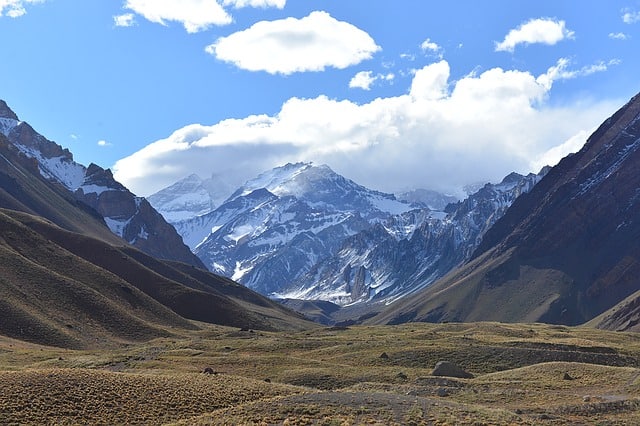Five Different Atmospheric Layers of the Earth

The atmosphere is the mass of air surrounding the earth. It’s constitutes a mixture of nitrogen (about 78%), oxygen (about 21%), and other gasses (about 1%) such as carbon dioxide (0.039%), argon (0.93%) and the rest are trace gases (krypton, neon, helium , and xenon). The mass of the atmosphere totals to about 5.15×1018 kg. Higher atmospheres are thinner and gradually move towards space.
The air in the atmosphere also contains varying water vapor, but on average the water vapor content is about 1% at sea level and 0.4% above the entire atmosphere. The air content and atmospheric pressure also varies at different layers of the atmosphere. Most of the clouds and weather as well as the atmospheric aspects that make life livable on earth originate within the first layer of the atmosphere. The earth’s atmosphere is divided into five layers.
Five Different Layers of Earth’s Atmosphere
-
The Troposphere
The troposphere is the lowers layer of the atmosphere, nearest to the earth’s surface. It is where all the aviation activities, weather, wind circulation, and climate take place. The air pressure over the troposphere is only 10% of that at sea level. The troposphere differs in height at different regions of the world and some of variations are as a result of weather.
It can range from about 16 kilometers at the equator to about 8 kilometers above the sea level at the poles. The higher the altitude, the cooler the temperature becomes within the troposphere. This is because the troposphere is mainly heated via transfer of energy from the earth’s surface. Of all the earth’s atmospheric mass, the troposphere contains 80% of it and it is denser than all the other layers on top.
Also, because it is severely compressed by the overlying layers, most of the weight in the troposphere lies in its lower regions. There exists a thin buffer zone between the troposphere and the next layer known as the tropopause. Beyond the troposphere, the temperature reverses and starts to increase with an increase in altitude.
-
The Stratosphere
The stratosphere is approximately 18 kilometers above the troposphere right after the tropopause. At the stratosphere, the pressure continues to decline but there is a gradual gain in temperature up to 0 degrees Celsius. The gain in temperature is associated with the absorption of the ultraviolet radiation from the sun by the ozone layer.
Similar to the troposphere, the stratosphere also varies in thickness and the air flow is majorly horizontal. It is thinner above the equator and relatively deep above the poles. It also lacks the weather-producing characteristics such as clouds because it has quite stable atmospheric conditions. Still, the lower part of the stratosphere where the air is coldest occasionally witnesses polar-stratospheric clouds.
The stratosphere also contains a thin ozone layer which shields the earth from the dangerous ultraviolet rays of the sun. The ozone layer is made up of reactive oxygen. The uppermost layer of the stratosphere is known as the stratopause. At this point, the temperature starts to fall once again.
-
Mesosphere
The mesosphere has an altitude as high as 80 kilometers above the earth’s surface and it is above the startopause. It is the third highest and the coldest of all the layers in the atmosphere with an average temperature of approximately -85 degrees Celsius. The temperature here drops sharply with an increase in altitude. In the highest layer of the mesosphere (the mesopause) the temperature bottoms out at a low of roughly -100 degrees Celsius at 80 kilometers above the earth.
The air here is so cold that even a single droplet of water vapor can be transformed into polar-mesospheric clouds. These clouds are regarded as the highest whenever they occur. After the mesopause, the temperature starts to rise with higher altitude. This is the layer where the meteorites commonly flare as they move into the atmosphere. Sprites or ELVES lightning are occasionally formed at this layer far above the tropospheric thunderclouds. Above all, the mesosphere is too high to be reachable by balloons or aircrafts. It is mainly reached by rockets.
-
Thermosphere
The thermosphere is the fourth layer of the atmosphere and has an altitude of between 80 and 100 kilometers. This makes it the second highest layer in the atmosphere. The thermosphere extends from the mesopause (the thin separating layer between the mesosphere and the thermosphere) to the thermopause (the highest point of the thermosphere).
The temperature in the thermosphere rises with altitude, becoming even higher for an indefinite distance into space and the temperatures can rise as high as 1500 degrees Celsius. This is due to extremely low density of molecules and the ionization of many atoms thereby creating a net electrical charge. However, the high temperatures are barely meaningful as the gas molecules are extremely far apart. For instance, an individual oxygen molecule can be as far as an average of 1 kilometer away from other molecules.
The lower part of the thermosphere contains the ionosphere. Ionosphere is a thin layer accountable for absorbing the energetic photons from the Sun and creates the possibility of making long-distance radio communications as it can reflect radio waves. The thermosphere is completely free of weather-producing characteristics. The international space station is located in this layer.
-
Exosphere
The exosphere is the very last and the outer limit of all the layers in the atmosphere. The bottom of this layer is about 500 kilometers above the surface of the earth. It extends from the thermopause which is the thin layer above the thermosphere. The exosphere is mostly made up of very low densities of helium, hydrogen and other various heavier molecules including oxygen, carbon dioxide, and nitrogen closer to the thermopause.
Similar to the thermosphere, the air molecules and atoms at the exosphere are extremely far apart that they can move hundreds of kilometers minus colliding with one another. Accordingly, the exosphere lacks the normal behavior of gases and the molecules constantly escape into space.
The movement of the free particles is influenced by the solar wind. Besides, the location of the exosphere is too far from the earth’s surface to exhibit any form of metrological activity. However, it is at the lower sections of the exosphere that the auroras sometimes form. Most of the satellites orbits in this layer.






